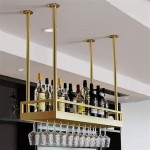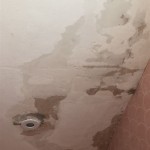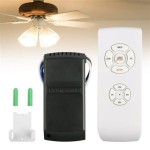Here's an article focusing on the topic of apartments with ceiling-to-floor windows, adhering to all specified requirements:
The Allure and Considerations of Ceiling-to-Floor Windows in Apartments
Apartments featuring ceiling-to-floor windows have experienced a significant surge in popularity in recent decades. This architectural design element, once primarily associated with high-end penthouses and modern architectural masterpieces, has become increasingly accessible in a wider range of apartment complexes. The appeal stems from a combination of aesthetic advantages, functional benefits, and a perception of elevated living standards. However, prospective tenants and developers alike must carefully consider the various factors associated with these expansive windows, including cost, energy efficiency, maintenance requirements, and privacy concerns.
The incorporation of ceiling-to-floor windows represents a departure from traditional window designs, which typically occupy only a portion of a wall. The full-wall coverage provides a dramatically different visual experience, transforming the interior space and blurring the lines between the indoor and outdoor environments. This article will delve into the various aspects of ceiling-to-floor windows in apartment settings, exploring their benefits, challenges, and key considerations for successful implementation and enjoyment.
Aesthetics and Natural Light Enhancement
One of the most prominent advantages of ceiling-to-floor windows is their aesthetic impact. The expansive glass panels create a sense of openness and spaciousness, making even smaller apartments feel larger and more airy. Natural light floods the interior, reducing the need for artificial illumination during daylight hours. This not only saves on energy costs but also contributes to a more positive and invigorating living environment. Studies have shown that exposure to natural light can improve mood, increase productivity, and even promote better sleep patterns.
Beyond simply providing light, ceiling-to-floor windows offer unobstructed views of the surrounding environment. This can be particularly appealing in urban settings with scenic cityscapes or in suburban locations with views of natural landscapes. The panoramic vistas create a dynamic backdrop, constantly changing with the time of day and the seasons. The ability to connect visually with the outside world can be incredibly restorative and provides a sense of connection to something larger than oneself.
Furthermore, the minimalist aesthetic of ceiling-to-floor windows complements a wide range of interior design styles. From modern and contemporary to minimalist and even bohemian, the clean lines and expansive glass surfaces serve as a neutral canvas, allowing residents to express their personal style through furniture, decor, and artwork. The windows themselves become an integral part of the design, adding a touch of sophistication and elegance to the overall aesthetic.
The design of the window frames themselves also contributes to the overall aesthetic. Modern designs often feature slim, unobtrusive frames that maximize the glass surface and minimize visual obstructions. These sleek frames can be made from various materials, including aluminum, steel, and wood, each offering a different aesthetic and performance characteristics. The choice of frame material can significantly impact the overall look and feel of the apartment.
Energy Efficiency and Environmental Considerations
While the expansive glass surfaces offer numerous aesthetic and functional benefits, they also present challenges in terms of energy efficiency. Glass is a relatively poor insulator compared to solid walls, meaning that heat can be easily lost in the winter and gained in the summer. This can lead to higher heating and cooling costs and a less comfortable living environment. However, advancements in glass technology have significantly improved the energy performance of modern windows.
Low-emissivity (Low-E) coatings are now standard on many types of windows, including those used in ceiling-to-floor applications. These coatings are designed to reflect infrared radiation, reducing heat transfer through the glass. In the winter, Low-E coatings help to keep heat inside the apartment, while in the summer, they help to block heat from entering. This can significantly reduce energy consumption and improve the overall comfort of the living space.
Double-paned or triple-paned windows are another common feature in apartments with ceiling-to-floor windows. These windows consist of two or three panes of glass separated by a gas-filled space, typically argon or krypton. The gas acts as an insulator, further reducing heat transfer. The use of multiple panes of glass can significantly improve the energy efficiency of the windows, making them comparable to or even better than traditional wall insulation in some cases.
Proper installation and sealing are also crucial for maximizing energy efficiency. Gaps and cracks around the window frames can allow air to leak in and out, negating the benefits of Low-E coatings and multiple panes of glass. A professional installation will ensure that the windows are properly sealed and insulated, preventing air leaks and minimizing energy loss.
Beyond the windows themselves, the orientation of the apartment building and the use of shading devices can also impact energy efficiency. Apartments facing south or west may receive more direct sunlight, potentially leading to higher cooling costs in the summer. Awnings, blinds, or curtains can be used to block sunlight and reduce heat gain. Planting trees or shrubs outside the windows can also provide shade and help to cool the apartment.
Privacy, Security, and Maintenance Aspects
Privacy can be a significant concern for residents of apartments with ceiling-to-floor windows, particularly in densely populated urban areas. The expansive glass surfaces offer unobstructed views into the apartment, potentially compromising the privacy of the occupants. Several strategies can be employed to mitigate this issue.
Window treatments, such as blinds, curtains, or shades, are the most common solution. These treatments can be adjusted to control the amount of light and visibility, providing privacy when needed. Blackout curtains can be used to completely block light and create a dark and private space, while sheer curtains can provide some privacy while still allowing light to filter through.
Privacy film is another option. This film can be applied to the glass surface to create a one-way mirror effect, allowing residents to see out while preventing outsiders from seeing in. Privacy film is available in a variety of tints and patterns, allowing residents to customize the level of privacy and the aesthetic of their windows.
Location also plays a crucial role. Apartments located on higher floors or with views facing away from other buildings naturally offer more privacy. The distance between the apartment and other buildings or public spaces can significantly impact the level of privacy experienced by the residents.
Security is another important consideration. Large glass panels can be vulnerable to breakage, potentially compromising the security of the apartment. Tempered or laminated glass is often used in ceiling-to-floor windows to improve their strength and resistance to impact. Tempered glass shatters into small, relatively harmless pieces when broken, while laminated glass consists of two or more layers of glass bonded together with a plastic interlayer, which prevents the glass from shattering completely.
Security systems, such as alarms and sensors, can also be installed to detect unauthorized entry. These systems can provide an added layer of security and peace of mind for residents. Regular maintenance is essential for preserving the appearance and functionality of ceiling-to-floor windows. The expansive glass surfaces can accumulate dust, dirt, and grime, requiring regular cleaning.
Professional window cleaning services can be hired to ensure that the windows are cleaned safely and effectively. Specialized equipment and techniques are often required to clean large, hard-to-reach windows. Regular inspections should also be conducted to identify any signs of damage or deterioration. Cracks, chips, or leaks should be repaired promptly to prevent further damage and maintain the integrity of the windows. The sealant around the window frames should also be inspected regularly and re-applied as needed to prevent air and water leaks.
The initial costs associated with apartments featuring ceiling-to-floor windows can be higher than those with traditional windows. However, the long-term benefits, such as increased natural light, improved aesthetics, and potential energy savings, can offset the initial investment. Careful consideration of the various factors discussed in this article is essential for making informed decisions about whether or not to invest in an apartment with ceiling-to-floor windows.

High Rise Apartment With Floor To Ceiling Windows Overlooking Downtown Seattle

How To Decorate A Nyc Apartment With Floor Ceiling Windows

Floor To Ceiling Windows Houston Apartment Locators With A Free Move

The Best Floor To Ceiling Window Apartments In Chicago Luxury Living

Best Corner Floor To Ceiling Window Apartments

7 Best Floor To Ceiling Window Apartments Atlanta

Floor To Ceiling Window Apartments In Houston A Guide For Renters Looking Free Apartment Locators Service

Luxury Apartment Tour City Views Floor To Ceiling Windows Night Walk Through Youtube

Best Corner Floor To Ceiling Window Apartments

Floor To Ceiling Window Apartments Atlanta








